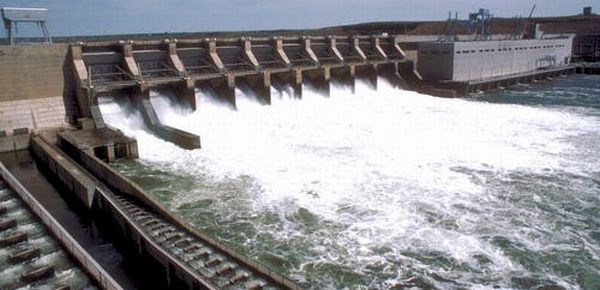Canadian hydropower could help U.S. achieve carbon-cutting goals

Washington – Canadian hydropower could help some U.S. states meet their carbon-cutting goals under the proposed federal Clean Power Plan, the Center for Climate and Energy Solutions (C2ES) says in a new policy report.
“Canadian Hydropower and the Clean Power Plan” explores the potential for increased hydropower imports from Canada, and the adjustments needed to the Environmental Protection Agency’s proposed plan to allow states to take advantage of imported hydropower to reduce carbon emissions from the electric power sector.
Canada gets 60 percent of its electricity from hydropower, and more capacity is in the works. More than a dozen U.S. states already import a significant amount of Canadian hydropower.
According to the report, importing hydropower from even a modestly sized new Canadian project (250 MW) could help a state bridge the gap between its current carbon emissions rate and its 2030 target under the Clean Power Plan. For example, Minnesota could get nearly 20 percent of the way toward its proposed target. California, Massachusetts and Washington state could each get about a third of the way toward their targets.
The U.S. and Canadian electricity grids are linked through dozens of connections along the border. But with renewable credit trading systems already in place, a state would not have to be connected to Canada’s grid to leverage Canadian hydropower for Clean Power Plan compliance.
“Hydropower can deliver near-zero emission power quickly and reliably. That makes it a good complement to intermittent renewables like wind and solar,” said C2ES President Bob Perciasepe. “While taking advantage of hydropower’s benefits, we also have a responsibility to develop and operate hydropower in a way that minimizes environmental impacts.”
The report outlines some of the steps needed for states to take advantage of Canadian hydropower, including: clarifying how imported hydropower will be treated under the Clean Power Plan, avoiding double counting imported hydropower for compliance purposes, and ensuring that it displaces fossil electricity to receive full credit.
“As proposed, the Clean Power Plan already offers states a wealth of policy options to achieve emission reductions,” Perciasepe said. “Clarifying that imported hydropower can serve as another measure in a state’s policy toolbox could add to the plan’s flexibility.”
The C2ES Report coincides with the release by the U.S. Department of Energy (DOE) of the first-ever report to quantify the current size, scope, and variability of hydropower supplies in the United States.
According to the report, hydropower provides approximately seven percent of the U.S. electricity supply — enough to power more than 20 million homes — and has experienced significant growth industry-wide. Within the last decade, the industry has supported more than 55,000 direct domestic jobs across the country, and has helped offset 200 million metric tons of carbon emissions per year, equivalent to the emissions from more than 42 million.
C2ES Vice President for Policy and Analysis Jeff Hopkins, Senior Fellow Kyle Aarons, and Senior Energy Fellow Doug Vine will discuss the report’s findings Wednesday, April 29, at the Wilson Center’s Canada Institute. Details are below.
Read the C2ES report here.
Share the infographic.
Read the blog post.



